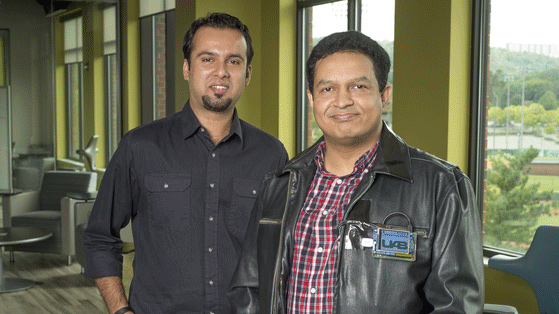This leather jacket doubles as a personal, wearable cloud
The Internet of You

We carry a lot of computing power around with us. A smartphone in our pockets. A smartwatch, or perhaps a fitness tracker on our wrists. A laptop in our backpacks.
With that comes a lot of redundant computing capacity. While you're typing on your laptop, the memory and CPUs in your other devices are dormant. In some cases, chiefly when it comes to notifications, this redundancy can be more annoying than anything.
So researchers at the University of Alabama at Birmingham are developing a solution - a wearable, personal cloud. A fully-functioning computing system that's embedded in your clothing, then accessed by different screens depending on your needs.
Working Together
"Currently if you want to have a smartwatch, smartphone, an exercise tracker and smart glasses, you have to buy individual expensive devices that aren't working together," said Ragib Hassan, who's working on the project.
"Why not have a computational platform with you that can support many forms of mobile and wearable devices? Then all of these capabilities can become really inexpensive."
Using 10 Raspberry Pi computers, three power banks, a small remote touchscreen display and a natty leather jacket, Hasan and Rasib Khan built a prototype of the device for testing. They presented it at the 40th Institute of Electrical and Electronics Engineers Computer Society International Conference.
"Our overall approach is to create a generic atmosphere or platform that users can customize to fit their needs," Khan said. "The wearable cloud can act as an application platform, so instead of modifying or having to upgrade hardware, this wearable model provides a platform, and developers can build anything on top of it."
Get daily insight, inspiration and deals in your inbox
Sign up for breaking news, reviews, opinion, top tech deals, and more.
Hyper Cloud
What's more, they theorise that each personal cloud could communicate with others nearby, forming a mesh network. "With seven to 10 people wearing such a cloud together, they create what we call a hyper-cloud, a much more powerful engine," Hasan said.
"The jacket can also act as a micro or picocell tower. All of its capabilities can be shared on a private network with other devices via Wi-Fi or Bluetooth. If a first responder is out in the field and doesn't have complete information to act on a mission, but someone else does, it can be shared and updated through the cloud in real time."
The pair detailed their research in a paper submitted to the conference, which you can find online here.
- Duncan Geere is TechRadar's science writer. Every day he finds the most interesting science news and explains why you should care. You can read more of his stories here, and you can find him on Twitter under the handle @duncangeere.
